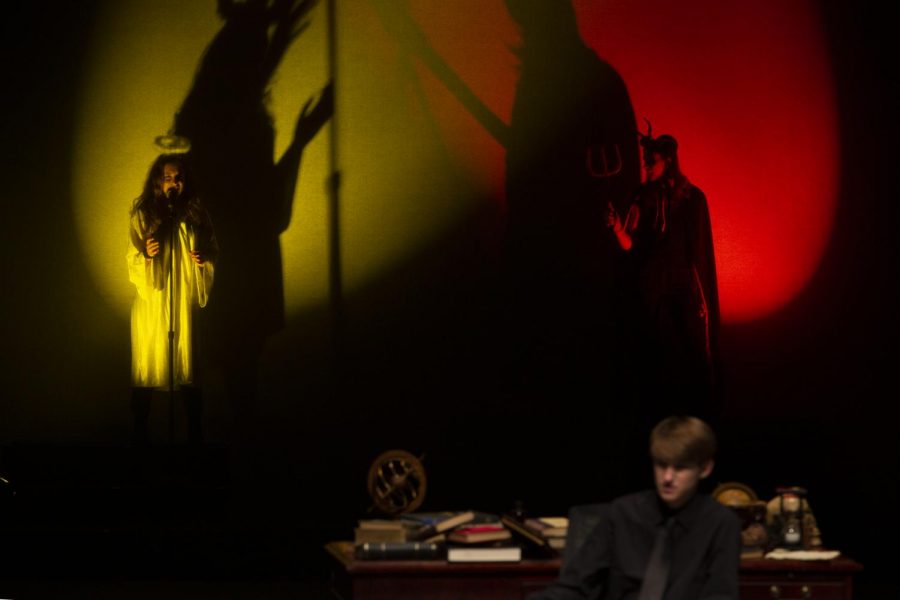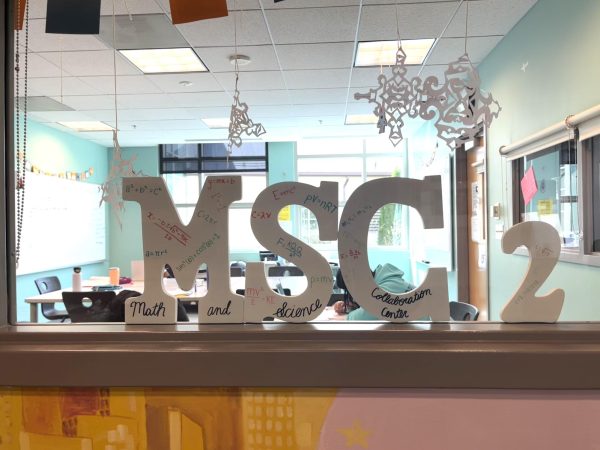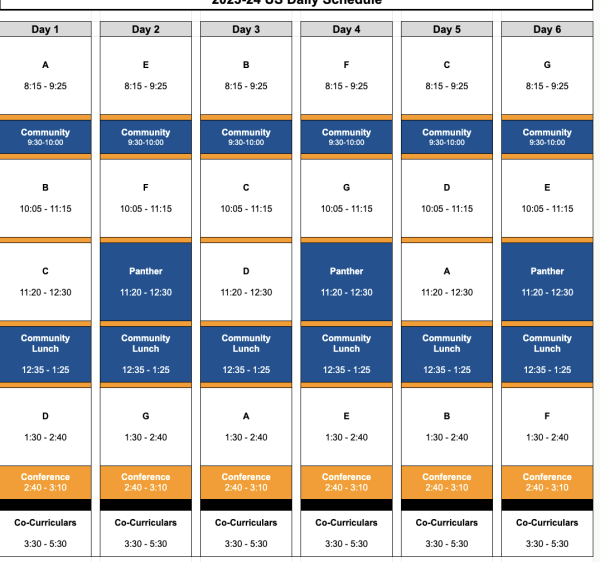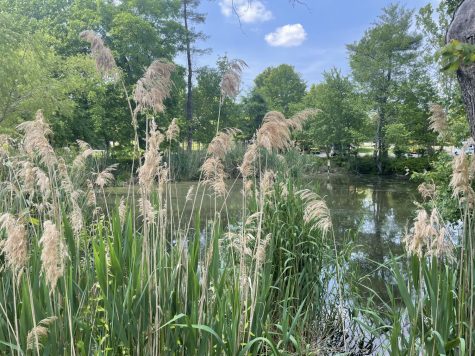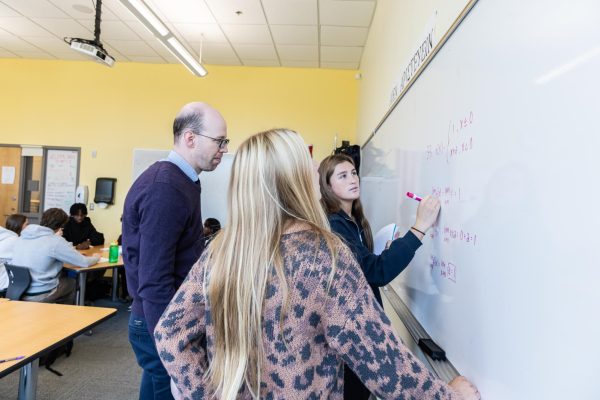Four Ideas for Restoring EPAC to its Intended Function as a Home for the Performing Arts
Playing the lead in our fall play showed me how the original spaces for the arts have been commandeered for storage and offices
Stunning light fixtures during the Upper School’s performance of “Faustus” illuminate the “Good Angel” and the “Bad Angel,” representing Faustus’ internal dialogue.
You may not see it, but the theater program at Potomac has been squeezed and overrun. Our space in the Engelhard Performing Arts Center (EPAC), which from the outside looks no different than it did when it was built 20 years ago, has been commandeered into something else entirely. I’d like to offer four suggestions to stop the erosion of theater at Potomac.
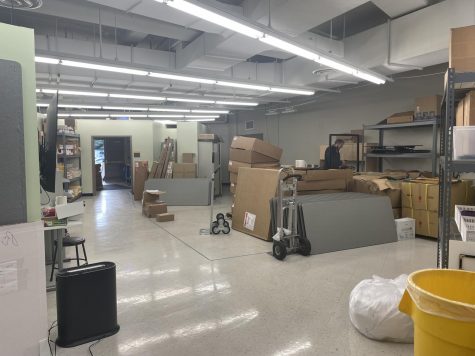
There are many aspects of theater at Potomac that are extraordinary, and just this past fall I had the phenomenal experience of playing Doctor Faustus in Potomac’s production of “The Tragical History of Doctor Faustus.” Diving into Faustus’ daring habits and conflicting aspirations was intellectually invigorating, and Mr. Mark McLaughlin, the director of the play, encouraged me to be confident in myself and explore how I could present Faustus’ internal struggle to an audience. The play’s small cast grew really close with each other during our planning and rehearsal. Approximately 200 people came to see the show in total, and the community and faculty support was encouraging and energizing.
As a senior, I want students coming after me to enjoy the same experience I had of being in the theater program at Potomac. Actually, I’d like them to have an even better one. The school had no control over some of the challenges we faced during “Faustus.” Due to social distancing restrictions, the show had to be held in the EPAC as opposed to the more intimate Upper School Blackbox. Although the audience was spread out and the acoustics were far from ideal, we made the best of it. With the lighting and sound technology of a full proscenium theater, we established a dynamic atmosphere, added dramatic sound effects, and created smooth transitions between scenes. The barebones set was centered around a desk overflowing with papers, vials, quills, globes, and a chair.
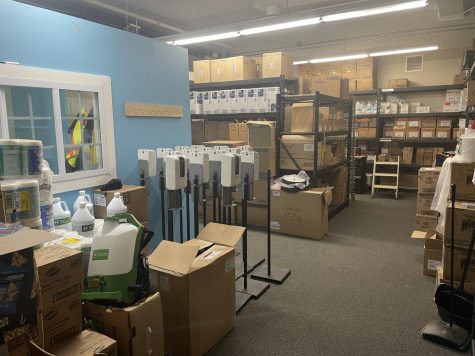
However, nearly all of the space that the designers created for the theatre department in EPAC has been appropriated for purposes that are unrelated to the performing arts. The basement of the EPAC was originally designed to replicate the full-scale proscenium stage on the floor above so actors could use the area to rehearse. In addition, performers use the space during tech week to eat meals, change into their costumes and apply makeup, meet to discuss notes, and do warm ups. However, the school has gradually taken away the space piece by piece. For example, the school originally built a Green Room with lots of open space, chairs, and couches for theatre students to work on a show or relax when they are not performing. Now, the room is unrecognizable, filled to the brim with boxes and cleaning supplies. Even the “Green Room” label was etched off the door and replaced with a “Buildings and Grounds” label instead. It’s not only the Green Room that is used as a storage space. The entire basement has been converted to a shipping and receiving department. The basement is loaded with shelves holding a vast array of school materials. Shipping and receiving cubicles litter the space, and despite the recent installment of the $37 million dollar Spangler Center for Sports and Community, football coaches’ offices are still located in the already miniscule basement of the EPAC.
With all this in mind, I have four modest suggestions–and I’ll explain how they would benefit the students in the performing arts at Potomac.
We need to restore the replica stage downstairs as a rehearsal space. During my last two shows in the EPAC, warm ups during tech week had to be held in the band room and middle school music room. Without a private space, many exercises and years-long traditions were abandoned because we were concerned about disturbing others. Even with a cast of only fourteen, finding room to circle around and eat was a challenge. Finally, we lose a central “hang out” spot where people can spend time with each other and truly bond as a cast.
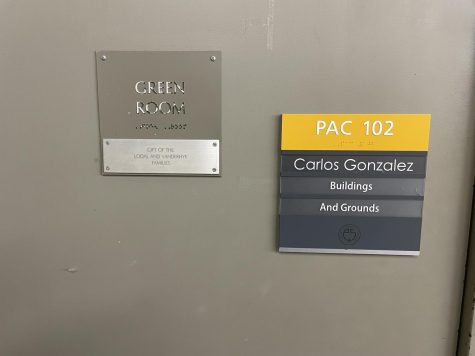
The changing areas are far too small for comfort, let alone any distancing whatsoever. Particularly for the girls, during musicals as many as a dozen or more may want to change at about the same time. Anyone who can’t fit into the changing room is forced to change in the tornado shelter. I can imagine many solutions (see moving the football coach’s office to the expansive new athletic complex).
The Green Room, which is now off limits and filled with boxes, should be restored to its intended use (presumably as it was described to the benefactors–see the plaque) as a place where theater folk can gather, talk, exchange ideas, and generally hang together.
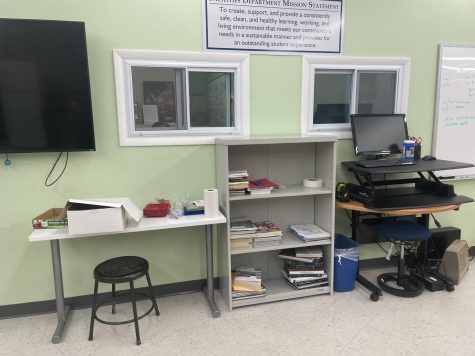
Perhaps we could envision another place for middle schoolers to eat than the EPAC stage. This year’s musical, “Guys and Dolls,” will be unable to have a permanent set because middle schoolers eat lunch on the EPAC stage.
Being one of three executive editors of The Current has taught me to be a realist. In a large institution, no one can wave a wand and get everything they want. At the same time, I have to believe that the many people who support theater at Potomac can take another look at how we’re using our spaces and give us back what we once had and now need.
Ethan Norton is a senior and executive editor for The Current. He joined The Current to pursue his interests in journalism and creative writing, and has...

